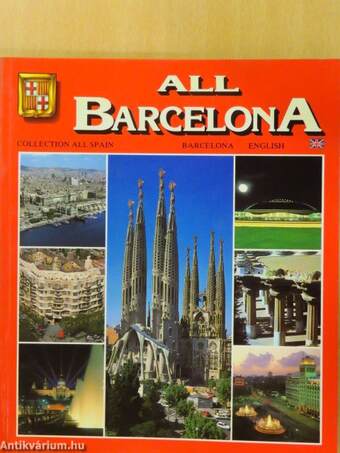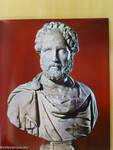1.035.017
kiadvánnyal nyújtjuk Magyarország legnagyobb antikvár könyv-kínálatát

VISSZA
A TETEJÉRE
JAVASLATOKÉszre-
vételek
All Barcelona
| Kiadó: | Editorial Escudo de Oro, S. A. |
|---|---|
| Kiadás helye: | Barcelona |
| Kiadás éve: | |
| Kötés típusa: | Varrott papírkötés |
| Oldalszám: | 96 oldal |
| Sorozatcím: | Collection All Spain |
| Kötetszám: | 2 |
| Nyelv: | Angol |
| Méret: | 24 cm x 20 cm |
| ISBN: | 84-378-1478-2 |
| Megjegyzés: | Színes fotókkal. |
naponta értesítjük a beérkező friss
kiadványokról
naponta értesítjük a beérkező friss
kiadványokról
Előszó
Museum of the History of the City: Román head of the Empress Agrippina. In marble, it dates back to the Ist century AD.
BARCELONA
Perhaps the most dynamic and innovative of Mediter-ranean... Tovább
Előszó
Museum of the History of the City: Román head of the Empress Agrippina. In marble, it dates back to the Ist century AD.
BARCELONA
Perhaps the most dynamic and innovative of Mediter-ranean cities, Barcelona unites, on the one hand, the traditions of 2,000 years of history (the city of Laye was conquered in the year 133 B.C. by Lucius Cor-nelius Barcino) with, on the other, its characteristic propension for expansion, commerce and creativity. Few Mediterranean cities can boast of such architec-tural richness, such úrban organisation, such culture, such transformations and such modernity as can Barcelona, many of whose exceptional present-day
Museum of the History of the City: Román bust thought to be of Antonino Pio, dating back to the 2nd
century AD.
features were bestowed on it by the Renaixenca in the second half of the 19th century and by the Modernist movement of the end of the last century and the beginning of this. The industrial bourgeoisie and the mercantile traditions held by the people of the city since the Middle Ages fiiled Barcelona with art and modernity, an inheritance which has made the city as it is today, one of the most fascinating in Europe. The challenge of hosting the 1992 Olym-pic Games has given fresh impulse to the enterpris-ing spirit which instils the people of Barcelona, open-ing a new period which has seen the transformation of the city's seaboard (where the Olympic Village now stands), the mountain of Montjui'c (Olympic Ring) and the network of infrastructures and ring-roads surrounding the city.
A little history
The Román city grew up on a small promontory, the Mons Taber, lying in the centre of a plain stretching between the Besós and Llobregat rivers on the banks of the Mediterranean Sea, protected from the north winds by the Collserola Mountains. The earliest plan for the city was laid down according to the classical system by Emperor Augustus between 27 and 14 B.C. Román remains abound in the subsoil of the area which is now the Gothic Quarter, the most outstand-ing of which are the impressive columns of the Temple of Augustus, which rose up in the very heart of Román Barcino (now in the Catalan Excursionists Centre).
The walled city continued to grow until the 4th century, when it was occupied by the Franks. Gradual-ly, it had displaced Tarraco (Tarragona) as the most important city of Hispania Citerior, but its importance was relegated again during the Visigoth period, although King Ataulfo made it the capital of his empire for a brief period during the 5th century. The ci- Vissza
Témakörök
- Idegennyelv > Idegennyelvű könyvek > Angol > Művészetek > Fotóművészet
- Idegennyelv > Idegennyelvű könyvek > Angol > Útikönyvek
- Útikönyvek > Európa > Dél-Európa > Városai
- Útikönyvek > Idegennyelvű útikönyvek > Angol
- Útikönyvek > Utazás, turizmus
- Útikönyvek > Természetjárás, túrák > Városnézés
- Művészetek > Fotóművészet > Albumok > Külföldi
- Művészetek > Fotóművészet > Albumok > Tematikus
- Művészetek > Fotóművészet > Idegen nyelv > Angol
- Művészetek > Fotóművészet > Témái > Városok > Külföldi









